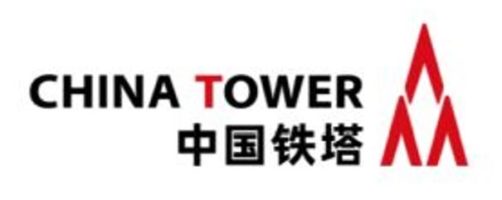Already gargantuan by global tower company standards, China Tower grew its installed base in 2020. The company built 29,000 new towers in 2020, bringing its total inventory to 2,023,000 towers by year-end. To put into perspective, that inventory is 10 times greater than American Tower’s (NYSE: AMT) global portfolio.
Tower tenants grew by 3.7 percent to 3,175,000 for an average tenants per tower ratio of 1.57, up from 1.54 a year ago. Site leasing revenues increased to $11.2 billion, up 2.8 percent from $10.9 billion at year-end 2019.
Like other markets around the world, 5G is the big driver for China Tower’s growth. The company is the primary supplier of wireless infrastructure to the country’s three national mobile network operators, China Telecom, China Mobile and China Unicom, that each have an ownership stake in China Tower.
The three MNOs collectively serve 1.6 billion wireless connections. Of those, 338 million, or 21 percent, already are using 5G. At year-end 2020, China Tower reported 766,000 cumulative 5G cell site installations since deployments began several years ago. Moreover, 97 percent of those cell sites are deployed on existing structures that the three MNOs share.
The company explains that it stepped up the 5G build pace throughout 2020 by providing high-quality and efficient construction services. Foremost is leveraging the potential of existing sites including sharing of towers, and fully utilizing site resources such as existing cabinets.
China Tower is making full use of street furniture in large cities, especially those resources that can house RAN equipment. At the same time, it is coordinating closely with local governments to gain access to resources that the municipalities own.
The company is developing 5G integrated solutions that provide a ‘one-stop shop’ service across towers, shelters, power supply and data transmission. With broader resource sharing, the company believes it can deliver better service.
China Tower also is launching cost-effective 5G passive distributed antenna system (DAS) sharing solutions with access to all available frequency bands.
The DAS business is one of China Tower’s fastest growing segments within its core business. Typically operating as a neutral host, its DAS revenues for 2020 grew nearly 33 percent year-over-year to $540 million from $407 million in 2019.
The company is focusing the DAS business on key scenarios in high-rise commercial and government buildings, large venues like stadiums, railway stations and airport terminals, along highways and railways, and in subways.
Given China’s population of 1.4 billion people and over 100 cities with more than a million people, there are a lot of buildings to cover with in-building wireless service.
At year-end 2020, China Tower’s DAS coverage reached nearly 44 billion square feet of building space, an increase of 16 billion sq. ft. from a year ago. Furthermore, the company extended its DAS reach inside subways to 3,000 miles, up over 900 miles YoY, and in high-speed railway tunnels to more than 3,800 miles, an increase of 500 miles in a year.
The company attributes its ability to scale through better resource allocation, efficient deployment methods, and sharing diversified resources to meet network coverage demands. Moreover, it coordinates closely with building and facility managers on site entry procedures and practices that help lower construction and operating costs.
China Tower is staying the course with its “One Core and Two Wings” strategy as its way to build growth and value creation.
One Core consists of the towers and DAS segments and accounts for the 95 percent of the company’s revenues with Two Wings, the balance.
Two Wings comprises the Trans-sector Site Application and Information (TSSAI) segment, and the Energy operations business. TSSAI provides site infrastructure, maintenance services and power generation and back-up services for different types of Smart Cities and industrial uses. The Energy operations business handles a battery recycling program and power backup services.
China Tower’s 2020 capital expenditures were $5.7 billion, up 37 percent compared to $4.2 billion in 2019. New site construction and augmentation accounted for $4 billion or 70 percent of total capex, reflecting demands of the company’s large-scale 5G deployment.
Two Wings business capex increased to $517 million from $133 million in 2019 with proactive development of both TSSAI and Energy operations businesses. Site replacement and improvement capex declined 11 percent to $574 million through tight control on maintenance expenses.
By John Celentano, Inside Towers Business Editor





Reader Interactions